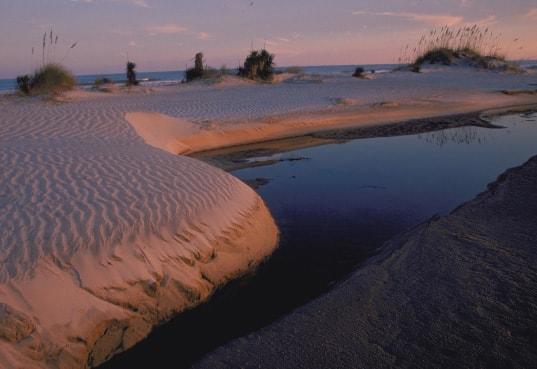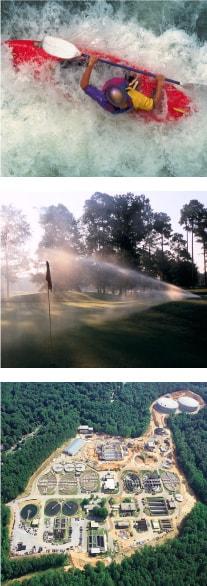
1.3 Meeting Georgia’s Water Resource Challenges
The Water Planning Councils spent almost three years examining and refining technical information about water resources and water use, comparing that information to visions and goals for their region, and identifying strategies for management. What has emerged are a set of practical approaches – customized for each region – to support continued growth and prosperity statewide while maintaining healthy natural systems.
The regional water plans identify a range of actions or management practices to help meet the state’s water challenges. In regions facing challenges with availability of surface water and groundwater, the plans recommend actions such as increasing water conservation and efficiency of use, master planning for local water systems, expanding or optimizing use of existing reservoirs, constructing new reservoirs where needed and feasible, and shifting to alternative sources of water.
To address water quality challenges, some or all of the plans call for higher levels of wastewater treatment, master planning for local wastewater systems, improved floodplain management, and stream buffer protection, among other actions. The plans also identify strategies to address water quality problems that result from stormwater carrying pollutants into water bodies, including a funded nonpoint source management project in each region.

Implementing these plans is critical to meeting Georgia’s water resource challenges. Local governments and others who develop water infrastructure and apply for permits, grants, and loans have a central role in plan implementation. State government also has an important role in supporting implementation. And, as emphasized in the plans, the success of implementation will rest, in large part, upon funding at state and local levels.
Continuing to improve data and information will also be important in meeting our water resource challenges. Over the past few years, the State made substantial investments in modeling tools and monitoring networks. However, information gaps and uncertainties still affected the Councils’ ability to plan. The regional water plans all include specific actions necessary to improve the tools and information used in water planning and management.

Finally, the regional water plans recognize the activities underway to promote water conservation, improve operations of federal reservoirs, address water quality in waters shared with other states, resolve interstate disputes over water supply, and meet a number of other region-specific challenges. The strategies in the plans reflect these complementary activities and will be implemented in concert with them.
In summary, the regional water plans are not themselves an end. The plans present solutions identified by a cross-section of regional leaders, drawing on regional knowledge and priorities. They are based on consistent, statewide forecasts of needs and reflect the best available information on the capacities of Georgia’s waters. The tools used to assess the capacities have been tested and refined, and will be further refined as we continue to improve information for planning and management. The process and results of regional planning, taken together, provide solid footing for plan implementation and the five-year review and revision required by the State Water Plan.
The investment in these assets will continue to pay off over time, advancing management of Georgia’s waters to support the state’s economy, protect public health and natural systems, and enhance the quality of life for all citizens.
Photo credit: Georgia Department of Economic Development
Photo captions (top to bottom):
- Cumberland Island, Coastal Georgia
- Tallulah Gorge State Park, Savannah Basin
- Georgia Veterans State Park Golf, Flint Basin
- Yellow River Water Treatment Plant, Ocmulgee Basin